Sturges: Why So Long?
What feels like the longest rail project in the world looks as if it has suddenly woke up from its winter slumber.
The new Sturges Rd rail bridge is finally moving ahead, while motorists continue to have to use the one-lane Bailey Bridge to get through the busy thoroughfare. (Hat tip Matt L who reported sighting bridge spans the other day).
The project still won’t be finished until around Christmas.
Here workers take advantage of a gap in train traffic this week to prepare for the first half of the bridge which will be placed from next week.
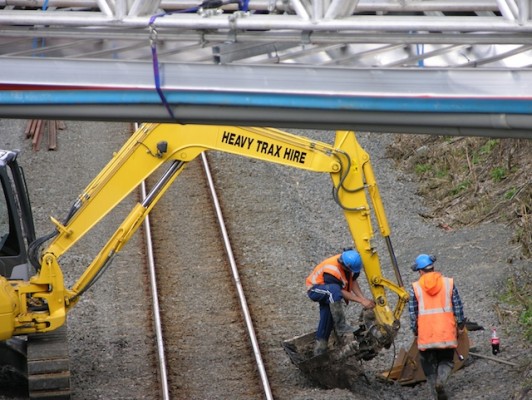
Here’s the inside rundown on the long sorry saga.
The original rail overbridge was built in 1940 by the old government railways department to ease the rail gradient by excavating a cutting below road level. Surveys and a structural monitoring programme undertaken by the Waitakere council in recent years has found that the condition of the bridge was poor with severe alkali/silicate reaction producing extensive cracking resulting in long term safety and longevity implications for the bridge structure.
I noticed this under the bridge close up back in November.
In fact, a load limit was applied to the bridge last year for safety reasons.
Ontrack /KiwiRail and the council agreed to replace the bridge on a shared cost basis but with the council acting as the principal.
Ontrack wanted specific dimensional parameters included in the design of the replacement bridge to provide greater height clearance so it would cope with the electric trains arriving after 2013.
The new bridge design has three traffic lanes, a 28 metre span, 5.5 metre clearance above the rail tracks and a deck thickness of 500mm.
But when the council publicly tendered the bridge, Ontrack didn’t like the tender prices submitted so redesigned the bridge with its own consultant to reduce costs.
Ontrack engaged Beca Ltd who redesigned the bridge based on reduced span paramters but with a thicker bridge deck and hence higher road levels which increased the effects of the road on adfjacent driveways and buildings.
But the effects of this design as assessed during the resource consent process were deemed to be “significant” so Ontrack elected to not pursue this option and the project was handed back to the council.
Then the council withdrew the resource consent application for the realignment of the road approaches to the bridge until negotiations between the council and Ontrack over the design parameters and methodology for implementation were concluded.
Eventually Ontrack advised the council it would contribute $2m towards the cost.(Cost breakdown at end of post)
Ontrack then told the council that only long weekends and occasional Sundays would be available for the work because of train traffic.
The council’s original designers were then engaged to amend and optimise their design according to Ontracks’s revised height and width paramters.
Four contractors were then shortlisted to be invited to tender.
A single stage contract procurement process was preferred by the council but the council was forced to end up with a two stage tender because sufficient engineering design information couldn’t be supplied in time.
So stage one involved demolition of the bridge, installation of a temporary Baileys bridge and installation of truss type support structures to divert utility services. That has been pretty much completed now.
Piles have been placed and Vector has been doing its relocation work.
Stage two will involve construction of the new bridge, driveway alterations and final service placement into the new bridge and removal of the two temporary bridges.
The new bridge is being constructed one side at a time.
Next month, after completion of the eastern half of new Sturges Road Bridge, Hawkins intend to remove the Bailey bridge from site and allow traffic to use the new bridge with a single lane in operation.
But re-alignment of the traffic flow path will require two to four days of continuous works. The Sturges Road Bridge will have to be temporarily closed to traffic for this period and alternative routes advertised.
Poor residents.
This week when taking these photos -and in fact every time I meet some of them while wandering around to see if there is any action, I hear moans about the inconvenience and especially the creaking noise made by vehicles travelling over the bouncy temporary bridge. There are even apartments right alongside the rail line.
It’s amazing how fast the new Onehunga platform was built once the consents and paperwork came through and someone gave someone the hurry up.
This is dragging on for ever as the council has to foot a lot of the bill.
17,000 vehicles usually use this road daily. They must be so tired of queuing.

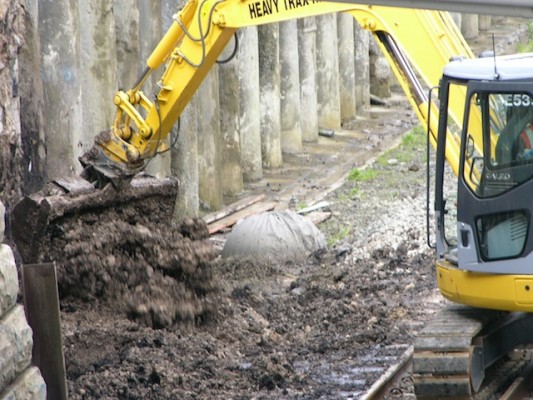
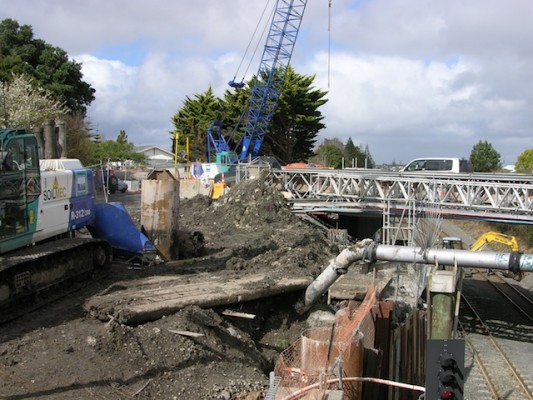
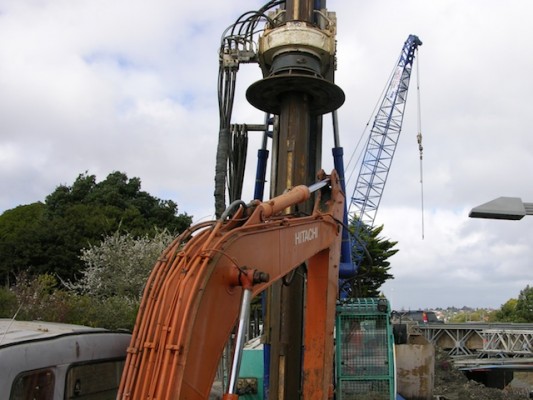
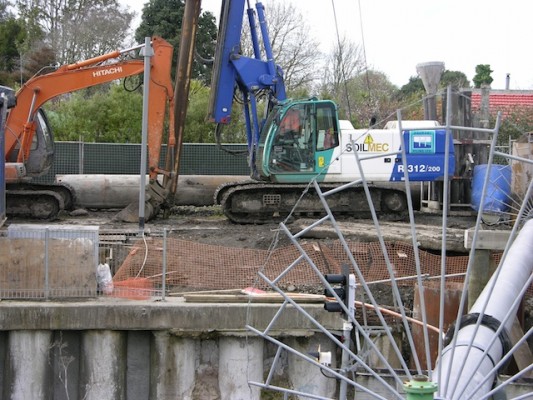
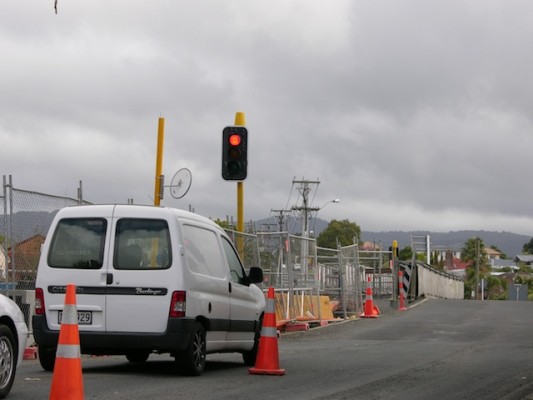










3 Comments
The bridge is actually scheduled to be closed from 25/09 to 10/10 for the works but I do hope it is only 4 days. Also you are correct, the queues can get quite bad and both alternate routes are quite long (I tend not to go near it in rush hour unless I am using the foot path).
Overall the whole thing has been a bit of a fiasco that has gone on for to long. Taking 1 year to replace a bridge this size is just crazy (there was no work at all on site from December till about June).
Half of the bridge is now in place - the spans were lifted in by crane last weekend.
Unbelieveable time & money- wasting bullshit.